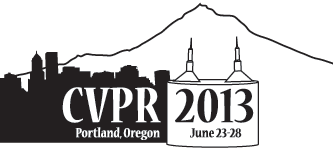-
Cartesian K-Means
AbstractA fundamental limitation of quantization techniques like the k-means clustering algorithm is the storage and runtime cost associated with the large numbers of clusters required to keep quantization errors small and model fidelity high. We develop new models with a compositional parameterization of cluster centers, so representational capacity increases super-linearly in the number of parameters. This allows one to effectively quantize data using billions or trillions of centers. We formulate two such models, Orthogonal k-means and Cartesian k-means. They are closely related to one another, to k-means, to methods for binary hash function optimization like ITQ [5], and to Product Quantization for vector quantization [7]. The models are tested on largescale ANN retrieval tasks (1M GIST, 1B SIFT features), and on codebook learning for object recognition (CIFAR-10).
Related Material
[pdf][bibtex]@InProceedings{Norouzi_2013_CVPR,
author = {Norouzi, Mohammad and Fleet, David J.},
title = {Cartesian K-Means},
booktitle = {Proceedings of the IEEE Conference on Computer Vision and Pattern Recognition (CVPR)},
month = {June},
year = {2013}
}
CVPR 2013 open access
These CVPR 2013 papers are the Open Access versions, provided by the Computer Vision Foundation.
Except for the watermark, they are identical to the accepted versions; the final published version of the proceedings is available on IEEE Xplore.
Except for the watermark, they are identical to the accepted versions; the final published version of the proceedings is available on IEEE Xplore.
This material is presented to ensure timely dissemination of scholarly and technical work.
Copyright and all rights therein are retained by authors or by other copyright holders.
All persons copying this information are expected to adhere to the terms and constraints invoked by each author's copyright.

